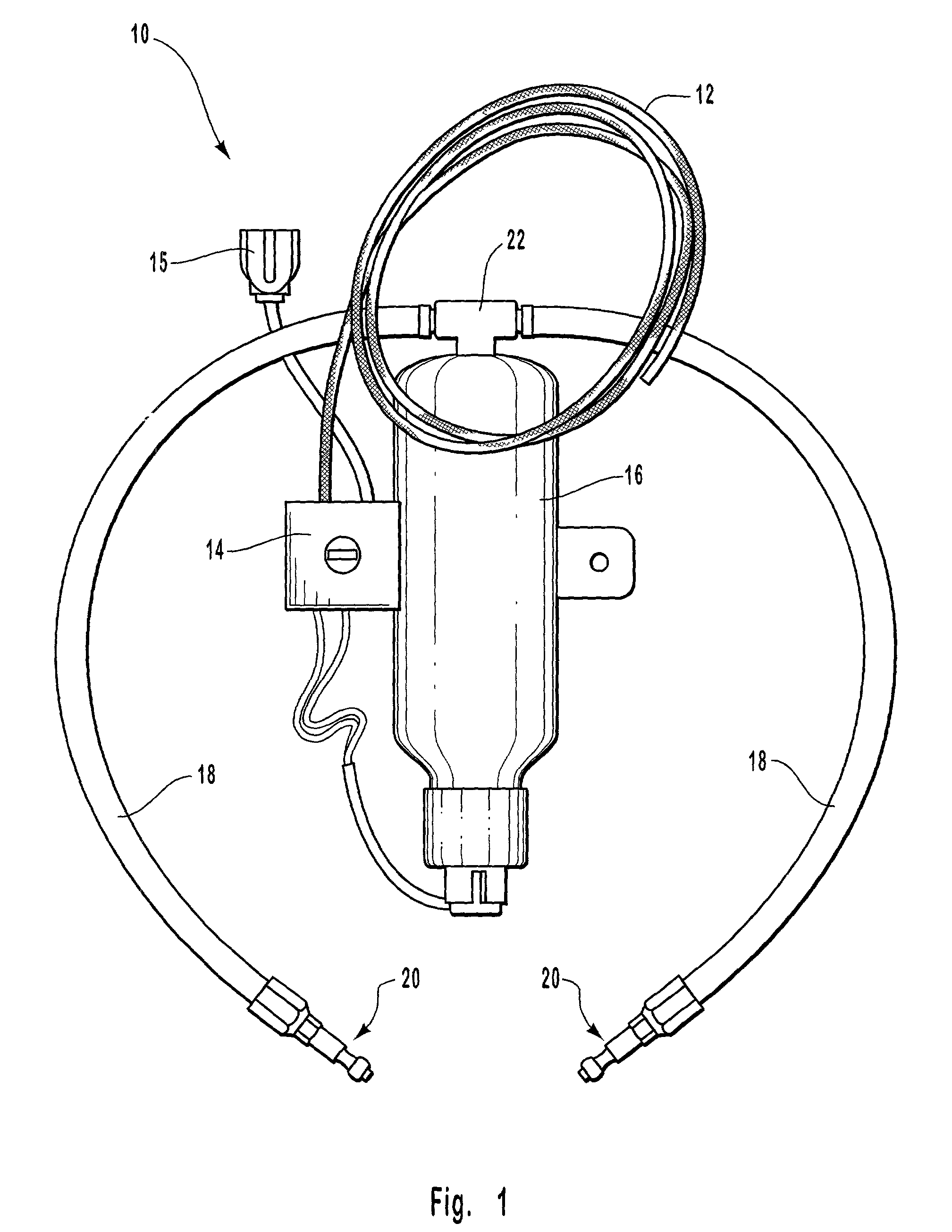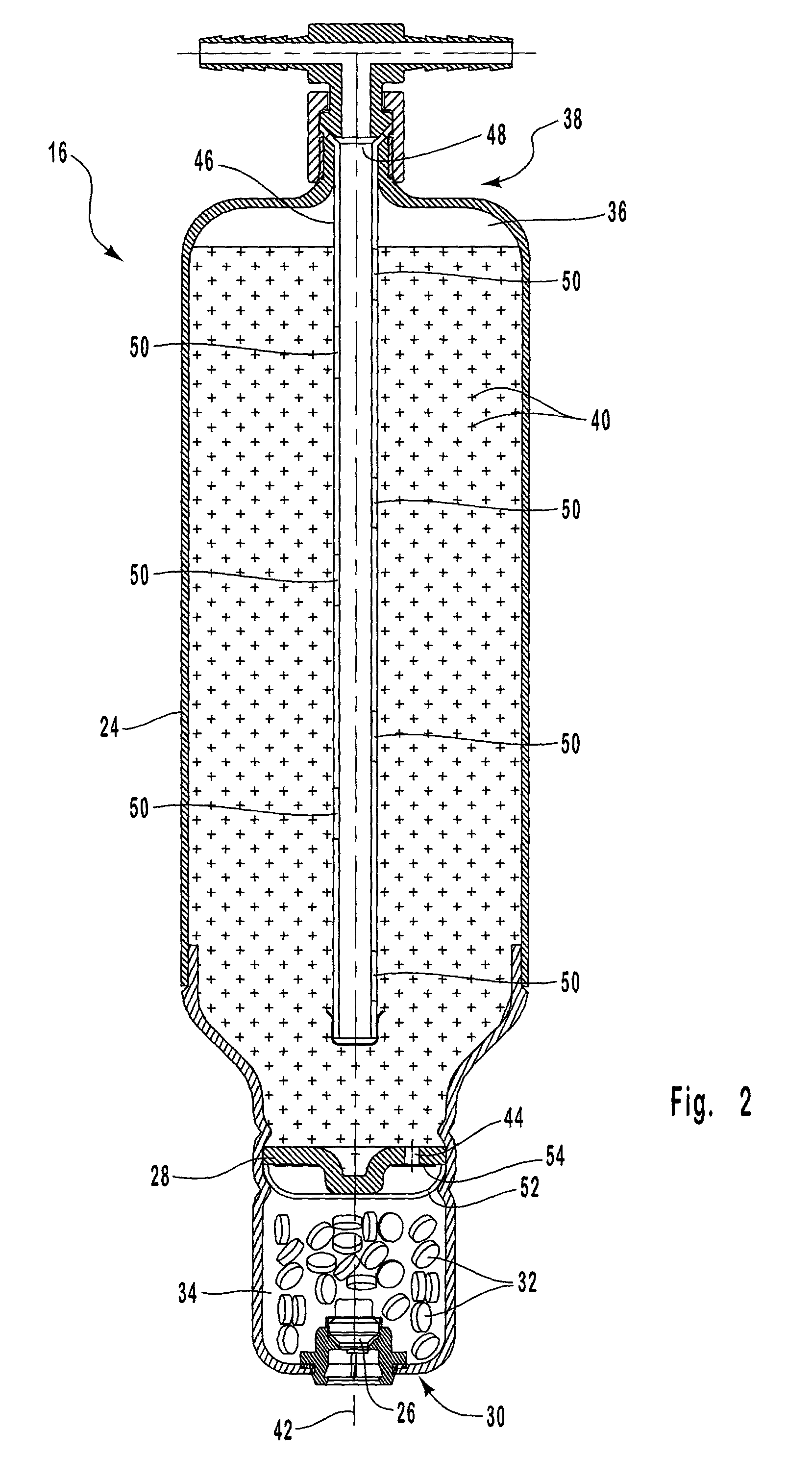Modular fire detection and extinguishing system
a fire detection and extinguishing system technology, applied in fire rescue and other directions, can solve the problems of motor vehicle fire, total loss of vehicle, injuring or killing vehicle occupants, etc., and achieve the effect of suppressing fir
- Summary
- Abstract
- Description
- Claims
- Application Information
AI Technical Summary
Benefits of technology
Problems solved by technology
Method used
Image
Examples
Embodiment Construction
[0035]The present invention can be better understood with reference to the drawings where like parts are designated with like numerals throughout.
[0036]FIG. 1 is a perspective view illustrating one embodiment of an automatic fire extinguisher system (AFES) 10. The AFES 10 includes a detector 12, a trigger 14, a gas generant fire extinguisher 16, and one or more modular distribution lines 18. Preferably, an AFES 10 is installed in an area which is predisposed to fires in that area, defined as a fire hazard zone. In a preferred embodiment, the fire hazard zone may be an engine compartment of a vehicle. Alternatively, the fire hazard zone may include cooking systems of a kitchen, machinery in a factory, or the like.
[0037]In certain embodiments, the detector 12 is a linear temperature sensitive cable. The cable includes two conductive wires which are covered by insulation. The insulation is designed to melt at a certain temperature. Generally, the melting temperature is such that the de...
PUM
 Login to View More
Login to View More Abstract
Description
Claims
Application Information
 Login to View More
Login to View More - R&D
- Intellectual Property
- Life Sciences
- Materials
- Tech Scout
- Unparalleled Data Quality
- Higher Quality Content
- 60% Fewer Hallucinations
Browse by: Latest US Patents, China's latest patents, Technical Efficacy Thesaurus, Application Domain, Technology Topic, Popular Technical Reports.
© 2025 PatSnap. All rights reserved.Legal|Privacy policy|Modern Slavery Act Transparency Statement|Sitemap|About US| Contact US: help@patsnap.com



